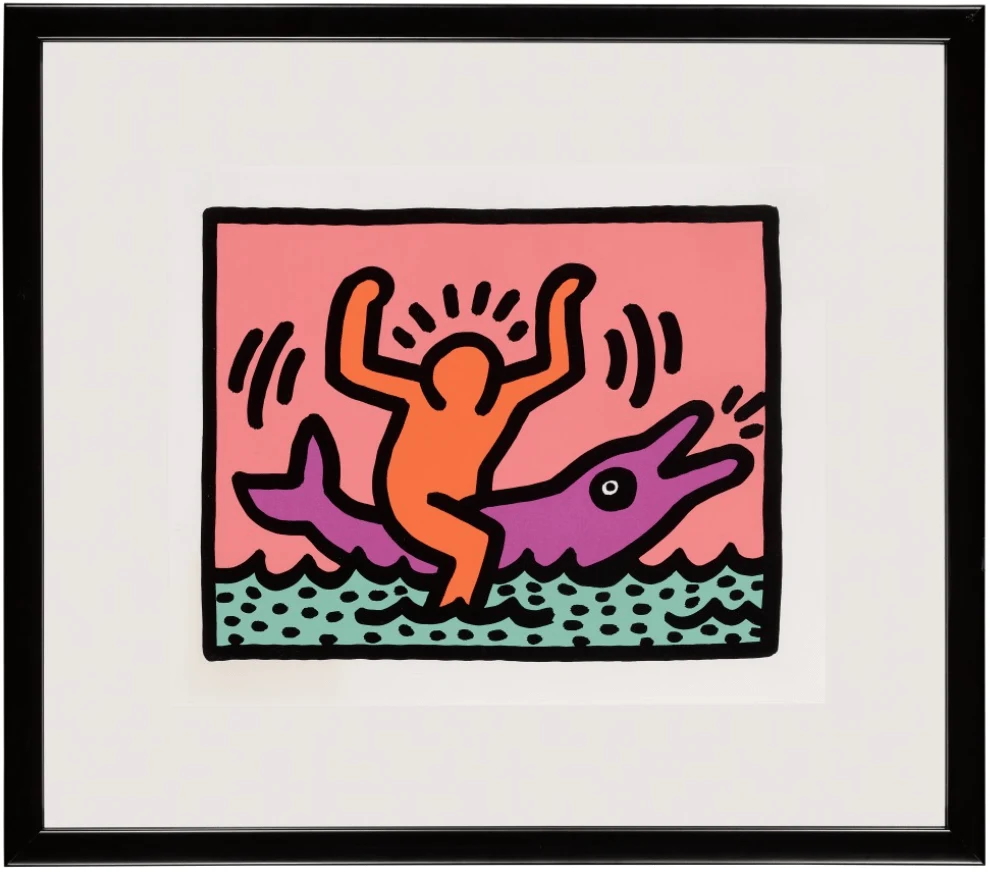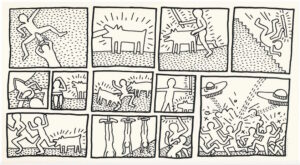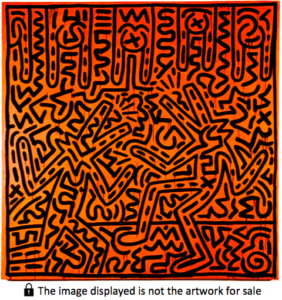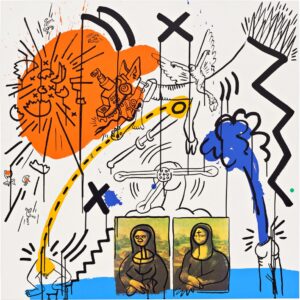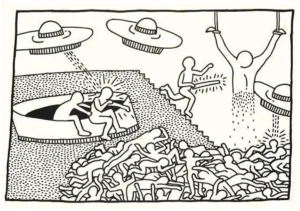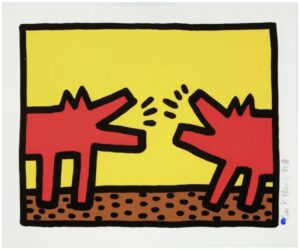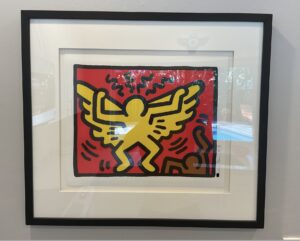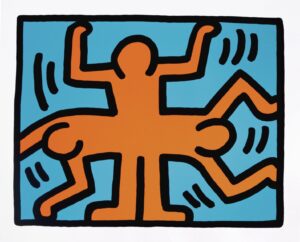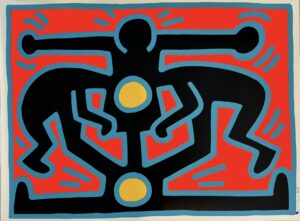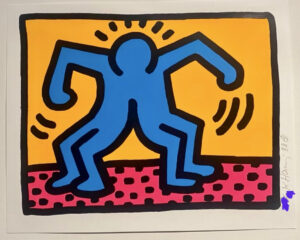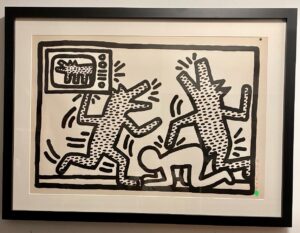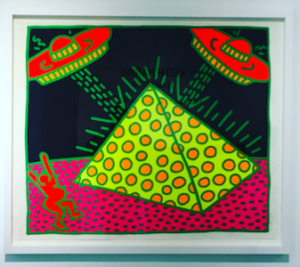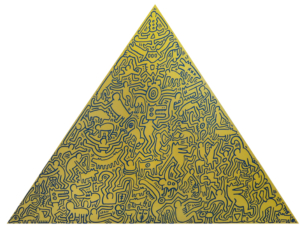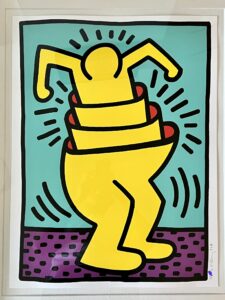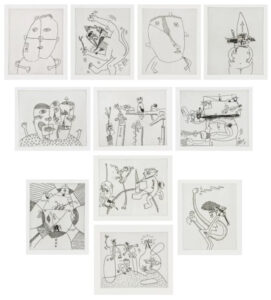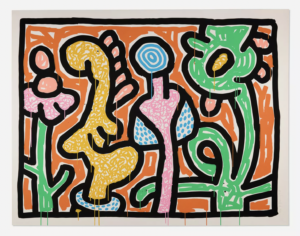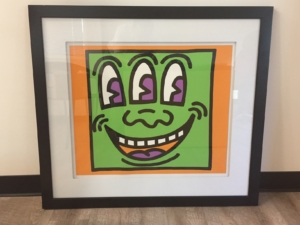Pop Shop V, 1989
Dated by the executor for the Keith Haring Estate, numbered in pencil verso, with an iguana blindstamp and stamped certificate of authenticity signed by Julia Gruen
13 1/2 x 16 1/2 inches (34.3 x 41.9 cm.)
All works are inspected prior to delivery, work will be sent out tracked and insured at buyers cost. If you'd like to make specific arrangements or discuss collection then please contact us directly.
Accepted: Wire transfer
ART PLEASE Assurance Policy: Every ART PLEASE seller has been approved by ART PLEASE after a thorough review. All of our sellers are required to accept the following ART PLEASE policy: A buyer may return an item purchased through ART PLEASE, if the item received is not as described in its listing, or is found to be unauthentic.
Keith Haring was a pioneering American artist whose bold, graffiti-inspired artwork became a defining element of 1980s pop culture. His art, often infused with social and political messages, revolved around themes of love, unity, and activism. Haring’s signature style—characterized by vibrant colors, thick black outlines, and energetic, cartoon-like figures—was influenced by street art, comic books, and abstract expressionism. He was deeply engaged in public art, creating large-scale murals and works that promoted awareness of issues such as AIDS, apartheid, and LGBTQ+ rights. Haring’s artistic legacy continues to resonate, cementing his place as a key figure in contemporary and pop art history.
One of his notable works, Pop Shop V, is a screenprint that embodies Haring’s signature visual language. Created as part of a series associated with his Pop Shop initiative, this piece features his dynamic, dancing figures in a rhythmic composition that conveys movement and joy. The print, executed in vibrant colors on wove paper, carries the authenticity marks of the Keith Haring Estate, including an iguana blindstamp and a certificate of authenticity signed by Julia Gruen. Measuring 13 1/2 x 16 1/2 inches, Pop Shop V exemplifies Haring’s commitment to making art accessible to a broad audience, reinforcing his belief that art should be for everyone, not just the elite.


